Making your own chickpea flour is a simple and rewarding experience. This guide provides two methods for creating this versatile gluten-free flour, allowing you to enjoy its benefits in various dishes.
Why Make Your Own Chickpea Flour?
Making your own chickpea flour offers several advantages:
- Cost-effective: It’s often more economical than buying pre-made chickpea flour.
- Freshness: Homemade flour guarantees freshness and optimal flavor.
- Control over ingredients: You can ensure the absence of additives or preservatives.
- Customization: You can grind chickpeas to your desired texture, making it ideal for specific recipes.
Two Methods for Making Chickpea Flour
Method 1: Direct Grinding (Quick and Easy)
- Gather your ingredients: You’ll only need dried chickpeas.
- Grind the chickpeas: Place the dried chickpeas in a high-speed blender or coffee/spice grinder and grind them into a fine powder.
- Sift and re-grind: Sift the flour to remove any larger lumps and re-grind them if necessary.
- Store the flour: Transfer the chickpea flour to an airtight container and store it for up to two months.
Method 2: Soaking and Drying (Preferred Method)
- Gather your ingredients: You’ll need dried chickpeas and water.
- Soak the chickpeas: Rinse the dried chickpeas and soak them in water for a minimum of 8 hours or up to 24 hours. The chickpeas will expand 2-3 times their size, so ensure they are covered with enough water.
- Drain and dry the chickpeas: Drain the soaking water and pat the chickpeas dry. You can use the soaking water to water plants.
- Dry the chickpeas: Spread the chickpeas in a single layer on baking sheets or dehydrator trays. Dry them in a sunny warm spot, a dehydrator at 50ºC for 12 hours, or an oven at the lowest temperature with the door slightly open.
- Grind the dried chickpeas: Once completely dry, grind the chickpeas in a high-speed blender or spice grinder until a fine powder forms.
- Sift and re-grind: Sift the flour to remove any lumps and re-grind larger particles if needed.
- Store the flour: Transfer the chickpea flour to an airtight container and store it for up to two months.
Tips for Success
- Ensure complete dryness: The chickpeas must be completely dry before grinding to achieve a fine powder. Otherwise, they will become mushy.
- Use a high-quality blender or grinder: A powerful appliance will ensure efficient grinding and a fine texture.
- Store properly: Keep the chickpea flour in an airtight container to maintain its freshness and prevent moisture absorption.
Using Chickpea Flour
Chickpea flour is a versatile ingredient with numerous culinary applications:
- Thickening sauces and curries: Its starchy properties make it an excellent thickening agent.
- Gluten-free baking: It serves as a great substitute for wheat flour in various baking recipes.
- Binding agent: It acts as a binding agent in fritters, veggie burgers, and other dishes.
- Flatbreads and tortillas: It’s the primary ingredient in flatbreads like Socca and Farinata, as well as tortillas and taco shells.
- Other recipes: It can be used in omelets, bread, cakes, cookies, pizza, and more.
Additional Notes:
- Gluten-free flours often require adjustments in recipes. For example, use 3/4 cup chickpea flour for every 1 cup of regular flour.
- While some use cooked chickpeas for flour, it’s unnecessary as the flour will be cooked in the final dish.
- Soaking chickpeas before drying is preferred as it increases their nutritional value, improves digestion, and removes potential pesticide residue.
Making your own chickpea flour is a simple and rewarding process. By following these methods and tips, you can enjoy fresh, flavorful, and versatile chickpea flour in your culinary creations.
How to Make Chickpea Flour
I’ll walk you through three different ways to make chickpea flour:
- Dry raw chickpeas
- Washed then dried chickpeas
- Soaked then dried chickpeas
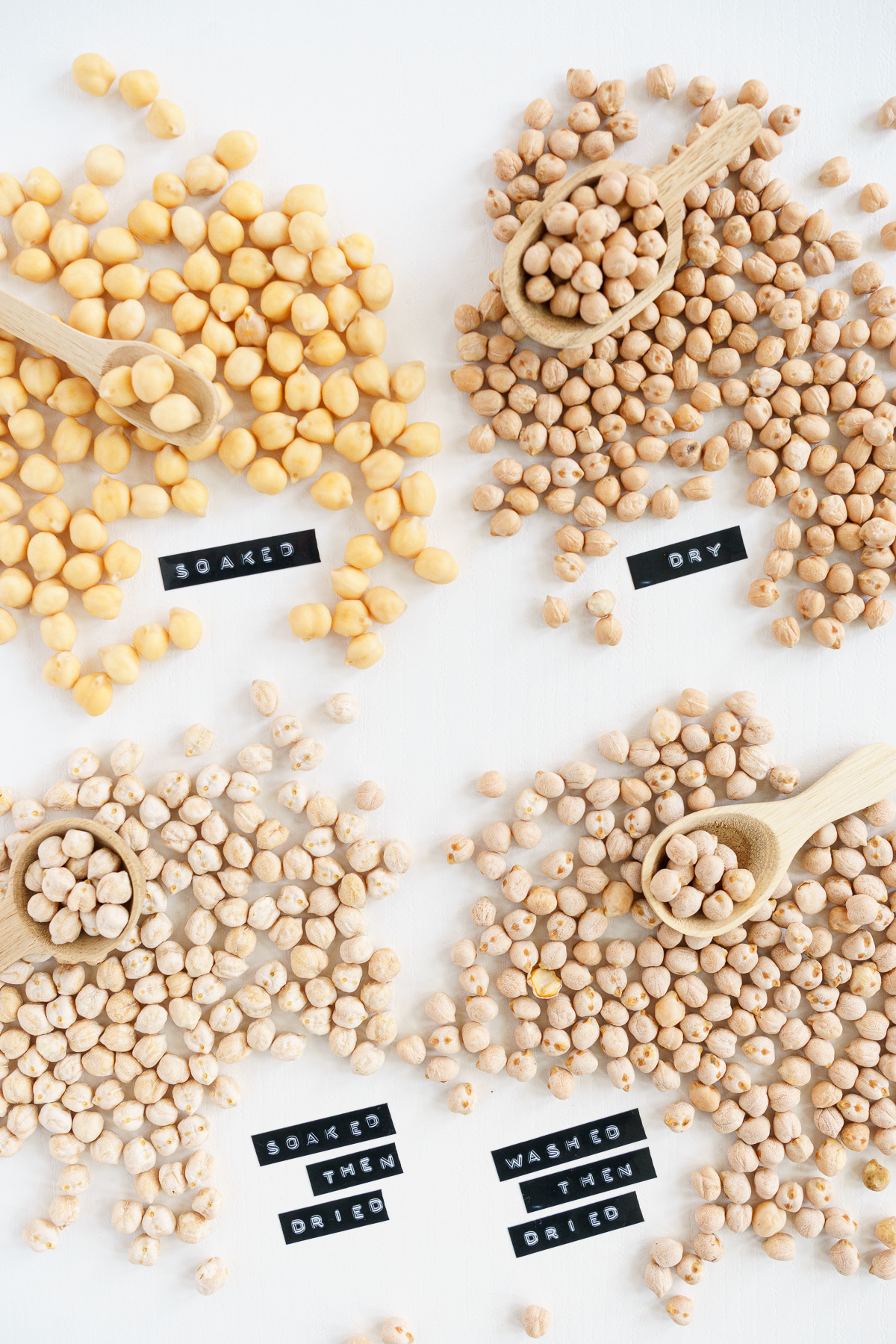
Option 3: Soaked chickpeas
Although this option is the most time-consuming, soaking the chickpeas makes the resulting flour more digestible and helps with nutrient absorption.
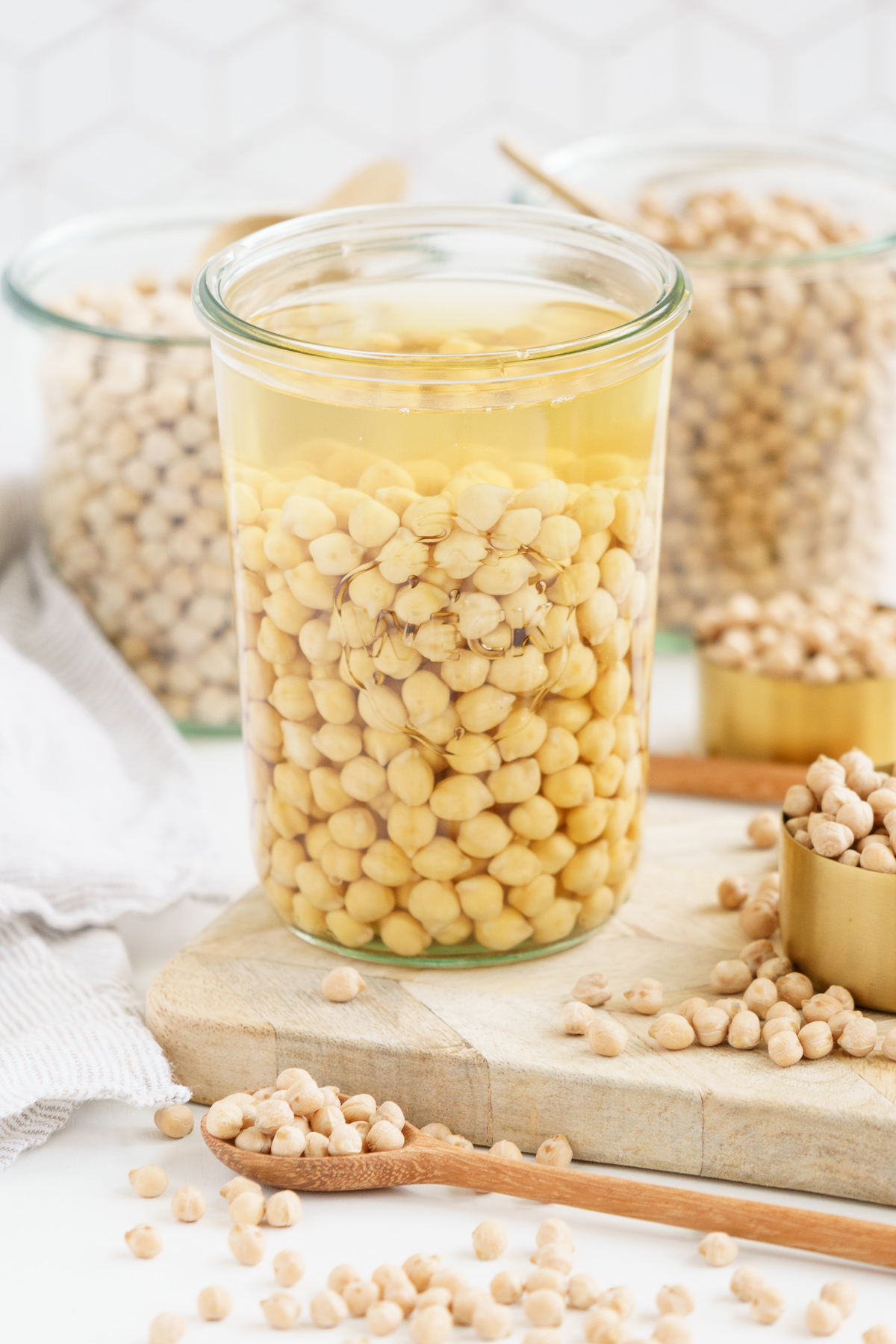
- Clean the chickpeas: Give them a good wash in cold water, then let them soak for a minimum of 12 to 24 hours. The longer, the better. Make sure to submerge them in a minimum of three times their volume of water. This is because the chickpeas will expand as they soak.
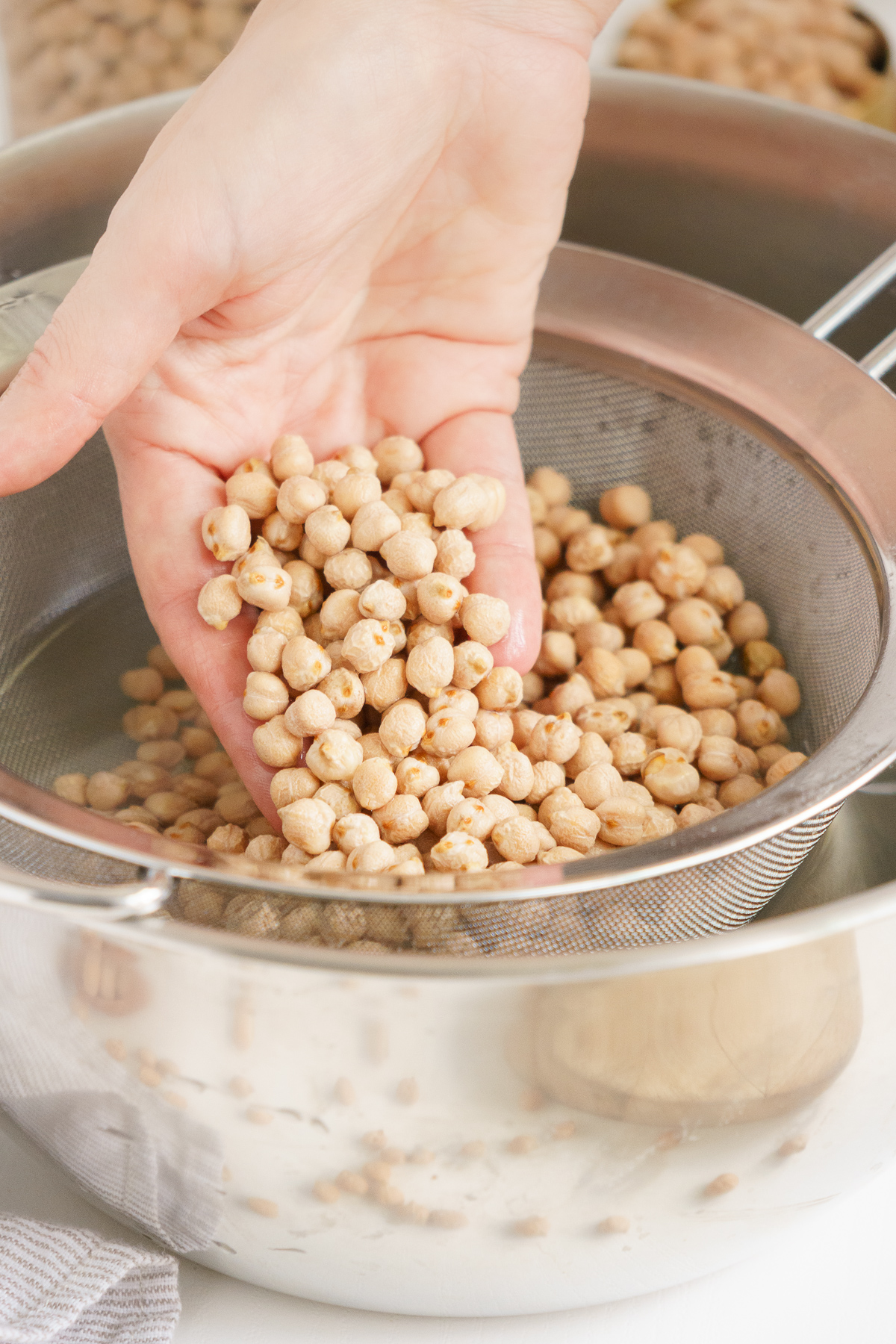
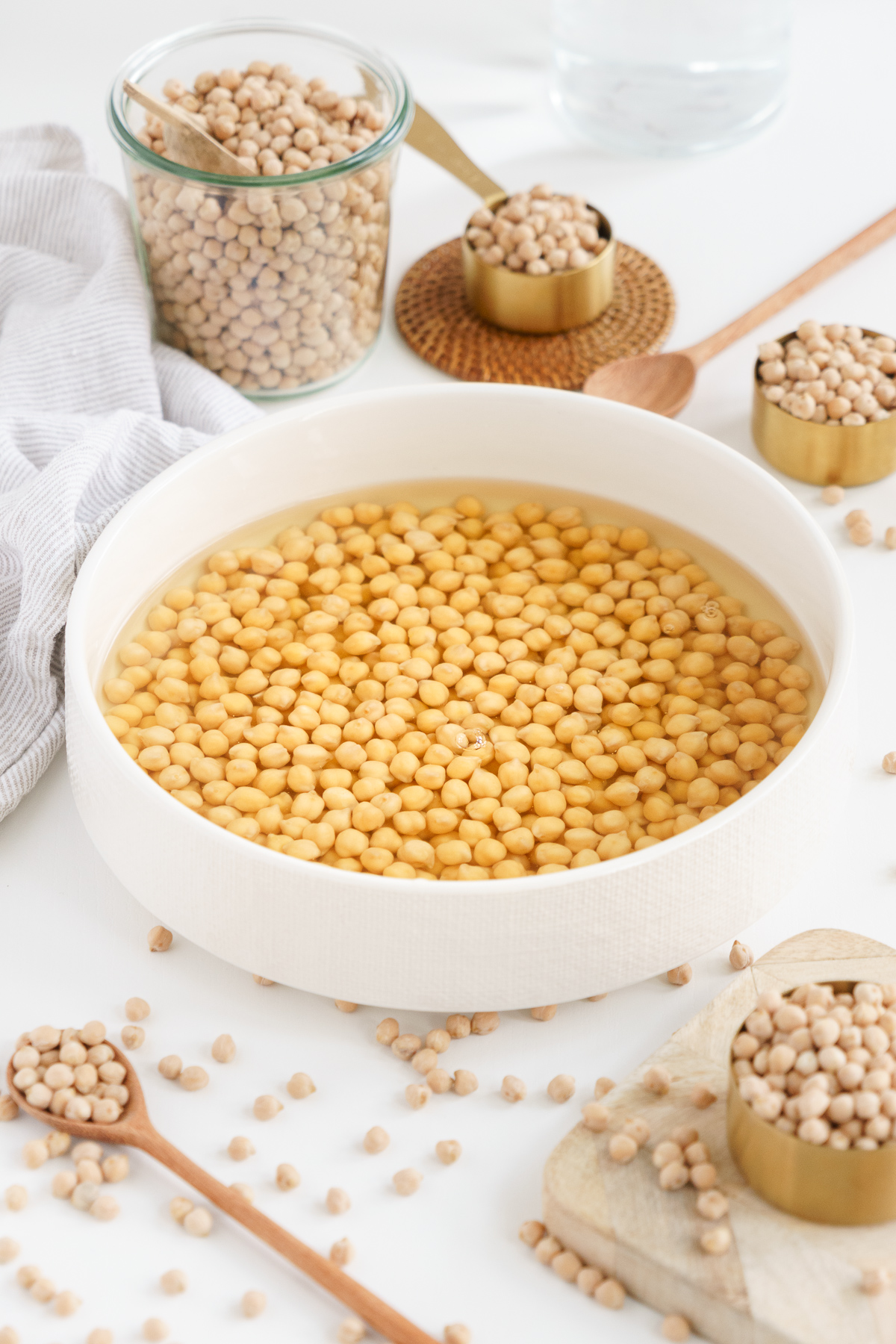
- Drain and dry: Drain your chickpeas and rinse them well. Then, dry them with a kitchen towel.
- Preheat the oven. Arrange the dried chickpeas in a single layer on a baking sheet. After that, you can either dry them for 8 to 10 hours on medium heat (about 200F or 100C) in the oven or for 12 hours at 120F (50C) in a dehydrator.
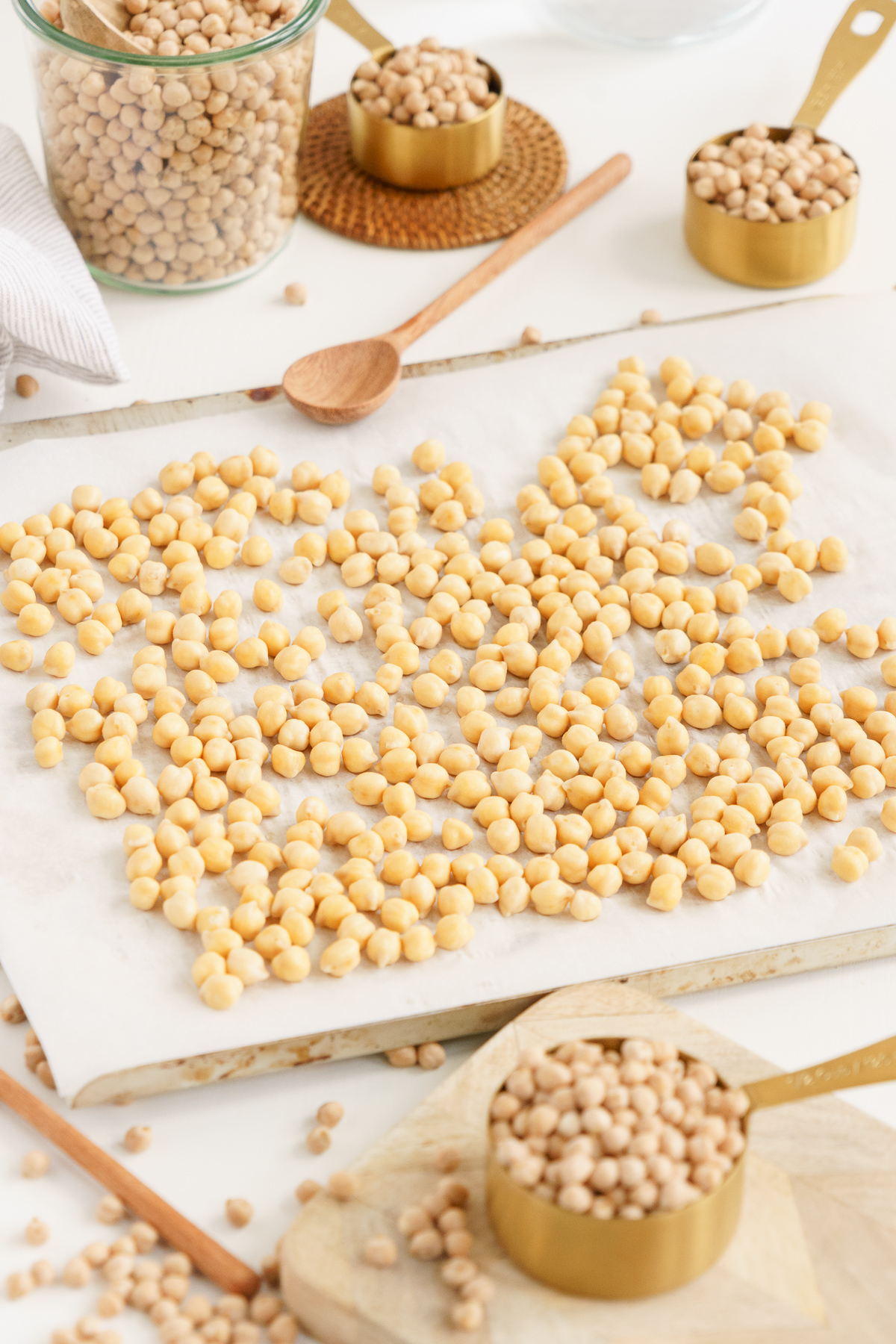
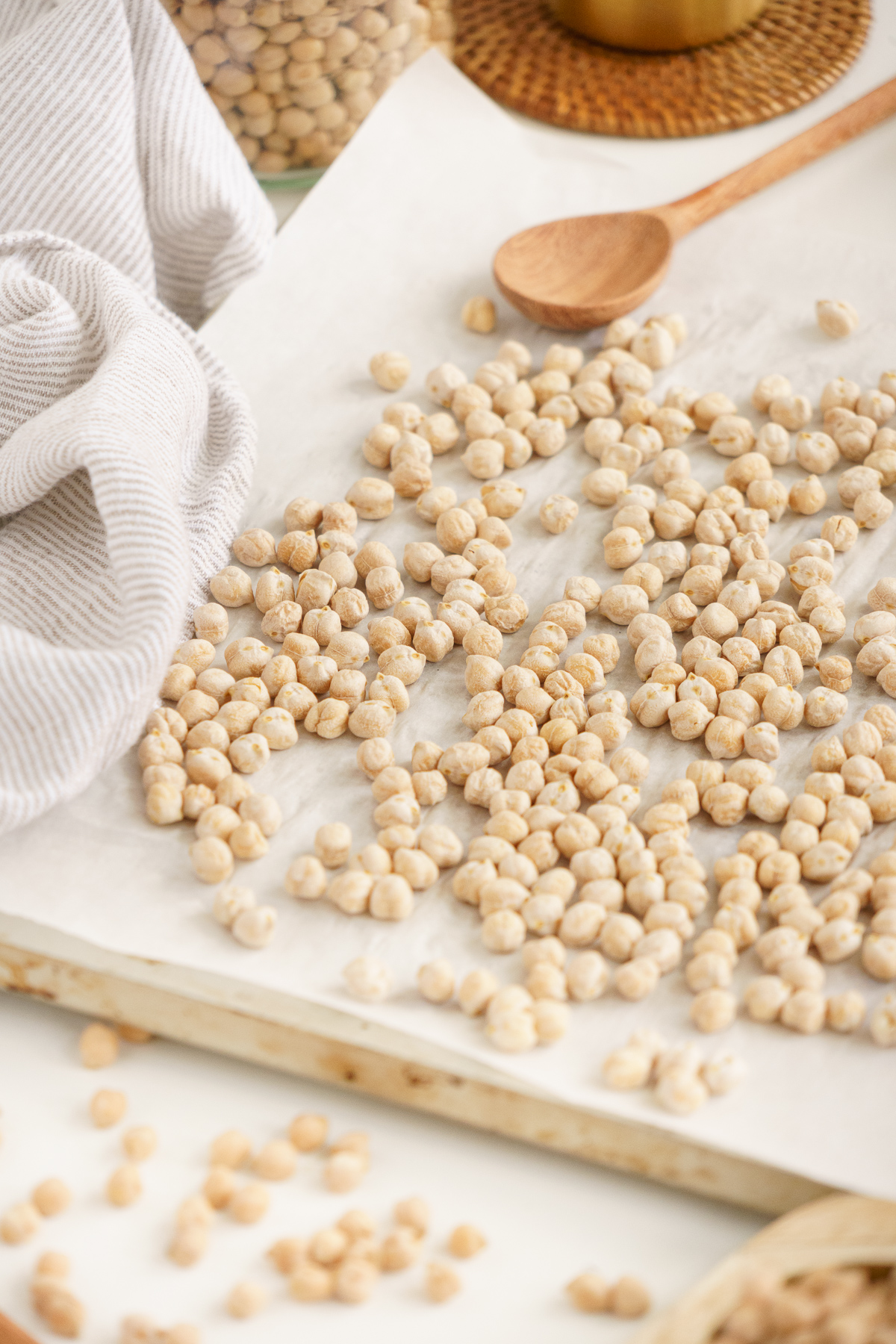
Your chickpeas must be completely dry before using the blender if you choose to use this method. Before blending, I usually break open one large chickpea after drying to see how things work. If not, you’ll have a mushy paste instead of chickpea flour!
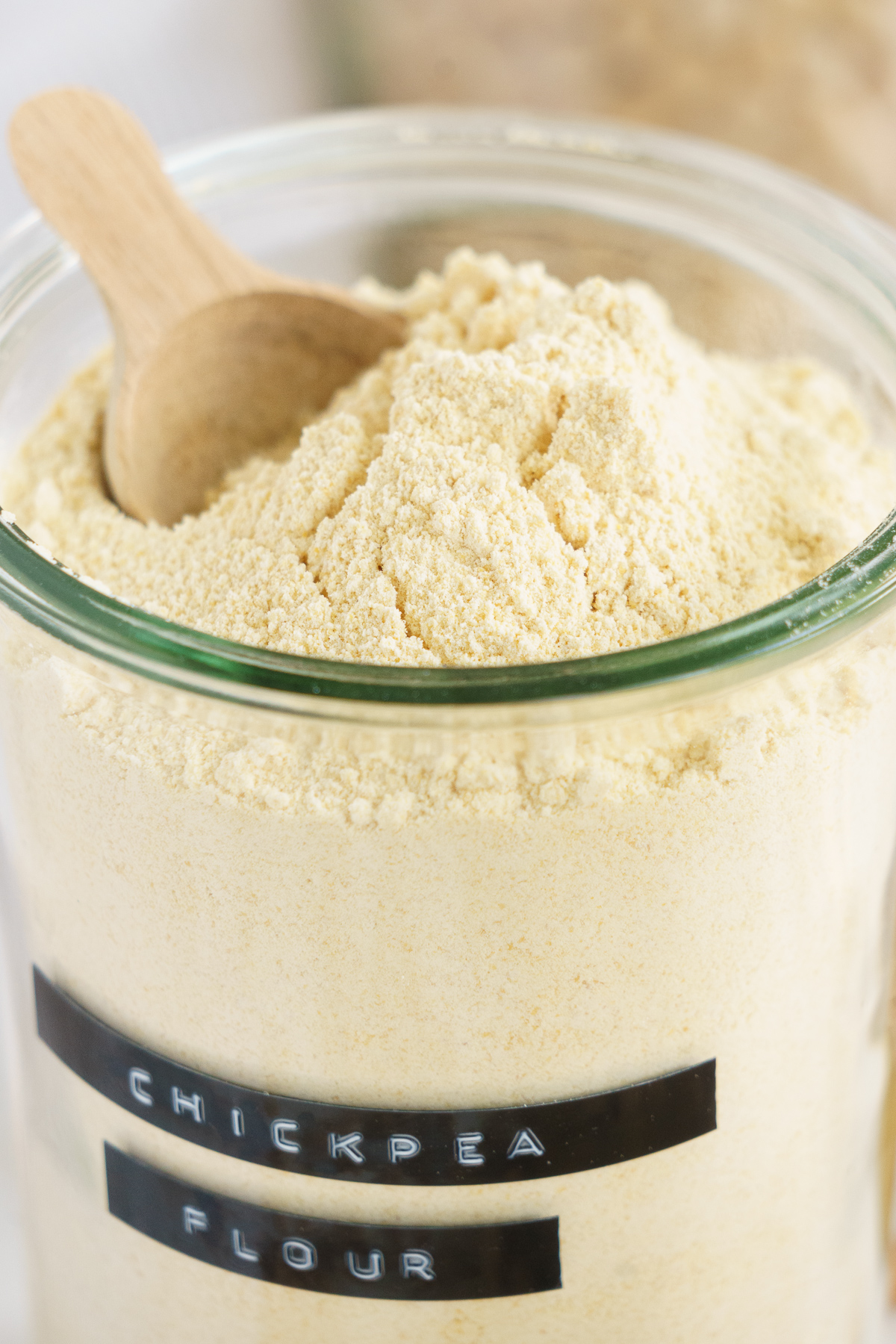
You may find yourself tempted to peel your chickpeas. But there’s no need. It adds a great deal of fiber and nutrients, so taking it out will only make your flour taste blander. I never remove the chickpea skin from my hummus for the same reason.
Though each flour varies slightly, it all comes down to the kind of bean! Chickpea flour is made from traditional garbanzo beans. Typically, split brown lentils, also known as chana daal, are used to make besan flour. That essentially consists of skinned and spit-open brown chickpeas. It’s usually finer and smoother than chickpea flour. Similar to this, gram flour is frequently prepared by combining split brown chickpeas with yellow split peas or lentils.
You can. But you’ll need to dehydrate them before making flour. To achieve this, you can use a dehydrator or bake them until they are dry. However, if you’re making your own flour, purchasing dried chickpeas is actually easier and less expensive!
In case you possess a powerful blender, preparing garbanzo bean flour at home is more affordable. Dried chickpeas are typically reasonably priced in one-pound bags at your neighborhood grocery store or foreign markets. This produces far more flour than you could buy for the same price at Whole Foods or other similar stores. Using a lot of garbanzo flour in your cooking will result in significant savings over time.
Chickpea Flour: How To Make Homemade Dried CHICKPEA FLOUR – Gluten Free Garbanzo Beans Flour
FAQ
Can you grind chickpeas in a blender?
How long to soak chickpeas before blending?
How do you make dried chickpeas edible?
